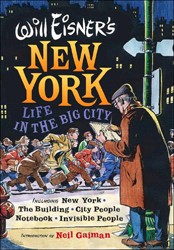In his preface to In Love With Art: Françoise Mouly’s Adventures in Comics With Art Spiegelman, comics reporter and critic Jeet Heer writes about how his short book is, in part, a corrective to the lack of attention generally given to comics visionary Françoise Mouly. As founder, editor, and publisher of the groundbreaking Raw magazine along with her husband, Art Spiegelman, and more recently as art editor of The New Yorker, Mouly has made a strong mark in the world of comics, publishing, and the arts. But her presence is frequently unacknowledged, a fault that Heer attributes to three factors: her chosen profession — editing — which has been dubbed “the invisible art;” her marriage to the world-famous, Pulitzer-prize winning author of Maus, which has sometimes left her hidden in his shadow; and her gender, which renders her influence and stature still somewhat of an anomaly in a world that often continues to register as male-dominated and exclusionary.
Heer’s book is an engaging and informative read, based mainly on interviews with Mouly, Spiegelman, and other comics artists who have worked with or been influenced by the Parisian-born New Yorker. The book is part biography and part comics history, and Heer’s skill in decoding and contextualizing formal aspects of the medium— and then connecting them to Mouly’s story — is evident throughout. He notes, for example, how Mouly’s early struggles with acclimating to life in New York and her recognition of “how disorienting New York can be to outside eyes” is apparent in the artists and subjects that she chooses to work with: many of her favorite New Yorker covers are “parody maps.” Similarly, her experiences as the daughter of a surgeon (and her training, given to her in the hopes that she might follow in his footsteps) have stayed with her, as she often works with cartoonists invested in “the human body as a radically mutable thing.” Her hands-on editing work, too, calls to mind how, as she puts it, “Surgical gestures have to have elegance and an economy of means.”
Mouly began her work as art editor of The New Yorker in 1993, and she has published some of the most controversial political images the magazine has seen, as well as increased the number of covers by fine artists and cartoonists. More recently, in 2008, Mouly began to publish a comics series for young readers called Toon Books. As the website proclaims, the series is “the first high-quality comics for kids ages three and up,” and it has published beautiful and complicated works by prominent cartoonists, including Art Spiegelman, Eleanor Davis, and Renée French. In all of her endeavors, as Heer makes apparent, Mouly attests to how “editing can be an art.”
As far as rendering visible what has too long remained hidden in the shadows, Heer’s book does a fine job of establishing the value and influence of Mouly’s life’s work until now. If the book has any shortcoming, it is in its title, which twice invokes her famous husband’s name and thus goes against the very premise of Heer’s own argument. Mouly is not, as some might see her, a great woman behind a great man, however much of her work has been inspired: she is, as Heer convincingly argues, an inspiration in her own right.
Related content:





